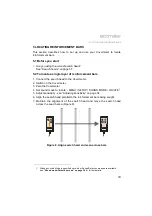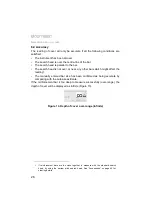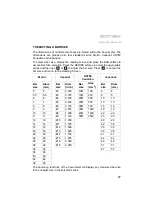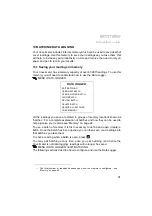
31
M
EASURING
SIZE
OF
REINFORCEMENT
BARS
(
ORTHOGONAL
)
R
11.When the search head is aligned correctly with the reinforcement bar, press
.
The Covermeter will display a depth of cover and a bar size.
12.If you are satisfied with the bar size, press
to set the Covermeter to use
this size. If you are not satisfied with the bar size, press
to return to the
reading screen without making any changes.
If the orthogonal size calculation fails (e.g. because of incorrect search head
positioning or because the bar is too deep), an error is reported with the option
to retry the procedure.
9.3 Accuracy
In common with all bar-sizing methods, the orthogonal SIZE function is
sensitive to errors in search head positioning and also to the proximity of
neighbouring bars (the pitch of the bars).
The net result of the error-generating influences listed below is that the
estimated bar size (and cover) will be too high. Hence the displayed result
should be taken as an upper limit, never as a lower limit.
Head-positioning
When taking the parallel reading (Figure 15), the search head should be getting
the maximum possible signal from the bar; any misalignment of the search head
in either angle or position can only reduce this signal.
When taking the orthogonal reading (Figure 16), the search head should be
getting the minimum possible signal from the bar; any misalignment of the
search head in either angle or position can only increase this signal.
Therefore, either form of positioning error will always result in the diameter
being over-estimated (and so too will be the cover).
Neighbouring bars
Any other metal within range of the search head will increase both the
(orthogonal and parallel) readings by an unknown amount, but not necessarily
the same for both readings. In practice, since the orthogonal signal is the
weaker of the two, it is more susceptible to ‘interference’, and so the estimated
diameter will probably again be too high.
Although, in normal use, transverse bars have comparatively little effect on the
cover obtained, these same transverse bars will have a serious effect on this
bar-sizing method: when the search head is rotated to take the orthogonal
reading, the signal from the bar under investigation decreases, but the signal
from any nearby transverse bars increases. Again, the result is a (possibly
Menu
Esc
















































